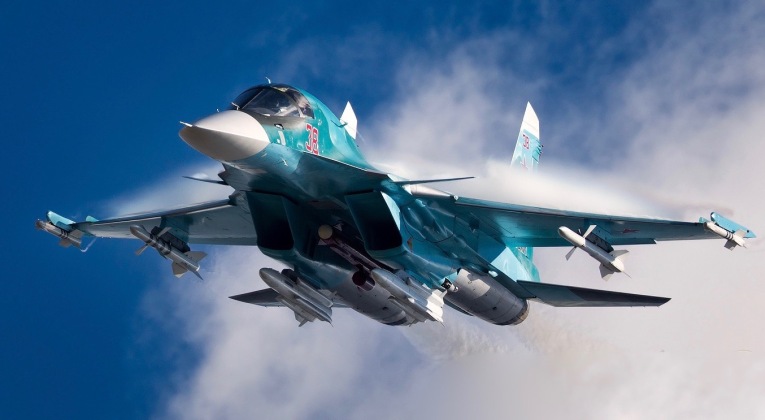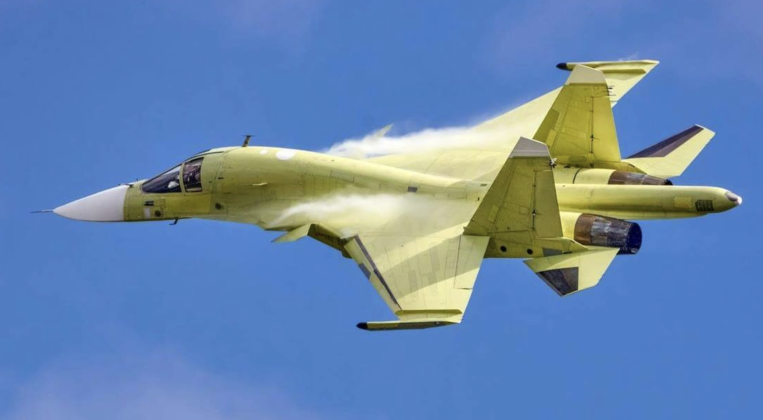The Russian Air Force received has received the latest batch of Su-34 strike fighters from the Novosibirsk Aviation Plant, with an undisclosed number of new airframes delivered on June 1 having been built to the enhanced new Su-34M standard. “The UAC [United Aircraft Corporation] has delivered a new batch of Su-34 frontline bombers to the Russian Aerospace Forces. These splendid aircraft have been manufactured at the Chkalov Novosibirsk Aviation Plant. The planes have undergone a set of ground and flight tests and have been delivered to the Defence Ministry of Russia,” the press office of the United Aircraft Corporation reported regarding the delivery, adding that: “The Su-34 features extended combat capabilities, enabling it to employ advanced air launched munitions, increase the range of striking ground and naval targets and expand the conditions and accuracy of bombing runs.” It concluded regarding the significance of the delivery that “Su-34 frontline bombers are a major part of the Russian frontline aviation’s strike power.” The latest delivery comes after the Air Force was announced to have received its last batch on November 16, and before that in early July.

The Russian Defence Ministry placed the latest order for Su-34s in August 2022, although unconfirmed reports emerged in June 2020 that the ministry had ordered 76 Su-34M jets. It is unclear which order the latest batch was delivered to fulfil. Su-34s delivered since July 2022 have notably been built to an enhanced standard as the Su-34M variant, and alongside the baseline Su-34M fighters specialised variants built for electronic warfare or reconnaissance have also been delivered. Director general of Russia’s United Aircraft Corporation Yuri Slyusar has claimed that the Su-34M has double the combat capacity of the original Su-34, which began to enter service in 2014, with an outstanding new feature being its dedicated interface for three different types of sensors maximising situational awareness. These include the UKR-RT electronic search pod, the UKR-OE camera pod and the UKR-RL which integrates a synthetic aperture radar. The electronic warfare variant, is far more lightly modified than electronic warfare models of overseas aircraft such as the Chinese J-16D or American E/A-18G, but integrates the L700 Tarantul ECM pod as a primary armament.

The Su-34 is the longest ranged fighter operational anywhere in the world, with its reach comparable to those of lighter strategic bombers such as the Tu-22M. The aircraft have been acquired in greater numbers than any other class by post-Soviet Russia, with deliveries consistent at 14 airframes per year since 2014, but reported to have increased since 2022 due to the demands of operations in Ukraine. The Russian Air Force’s conservative use of standoff air to surface weapons often forced Su-34s to be deployed for bombing runs using gravity bombs, which left the aircraft vulnerable to Ukrainian air defences and particularly its easily concealed handheld surface to air missile launchers which emit no radar signatures, cannot not be jammed, and have proven dangerous at lower altitudes. The result has been significant losses for the class due to the nature of their missions, where losses for other fighter classes deployed differently such as the Su-35 air superiority fighter have been very low. The Su-34 is relied on heavily across multiple theatres including Syria and the Arctic, and benefits from limited stealth capabilities, with its frontal radar cross section comparable to that of a cruise missile, as well as from robust air to air combat capabilities despite its primary role as a strike fighter.
